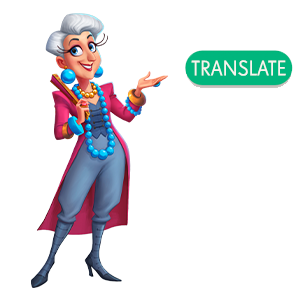
The Community in more languages
Now the forum welcomes more languages.
You'll see a green translate button in comments and discussions to turn them into English
💡 Did you know? 💡
💎 Facts about Diamonds (Part 5) 💎
Huh? Lucy?! 🤔
Yes! Lucy is Diamond Diaries Character too! Haha! 😅
💡 Did you know? 💡
🎎 Facts about Matryoshka Dolls 🎎
💡 Did you know? 💡
🎎 Facts about Matryoshka Dolls (Part 2) 🎎
You are welcome! @Elsa 😊
March 27th is the annual observance of National Spanish Paella Day. A rice dish from Spain, paella has become very popular and is known around the world. It originated in its modern form in the mid-19th century in Valencia, on the east coast of Spain.
At lunchtime, workers in the fields would make the rice dish in a flat pan over a fire. They mixed in whatever they could find – such as rabbits, snails, and vegetables. Later, for special occasions, chicken was added. Paella has spread to every region of Spain, as well as worldwide, using almost any type of ingredient that goes well with rice.
There are many versions of recipes of paella. Key ingredients are saffron and olive oil. Saffron is an essential spice that also turns the rice a beautiful golden color. (Info here)
💡Did you know?💡
🎎 Facts about Matryoshka Dolls (Part 3) 🎎
💡Did you know?💡
🎎 Facts about Matryoshka Dolls (Part 4) 🎎
Smoke & Mirrors Day is celebrated on March 29th of each year. The source of the name is based on magicians’ illusions, where magicians make objects appear or disappear by extending or retracting mirrors amid a confusing burst of smoke. Generally, “smoke and mirrors” may refer to any sort of presentation by which the audience is intended to be deceived.
Mirror Magic
Magic as a performance art has been used to entertain people around the world since ancient times. In smoke and mirror magic tricks, magicians create optical illusions by diverting a spectator's attention away from the actions that create the "magic". Mirrors are also often used to create illusions by manipulating light and using the properties of reflection and refraction. Some of the popular magic tricks using mirrors include the Sphinx and the Vampire. In both tricks, mirrors are used to hide the object, usually the head of a person.
How to Celebrate?
Learn some magic tricks and entertain your friends and colleagues. Preferably try to use smoke and mirrors in your tricks.
Spend some time learning about how to achieve illusions using mirrors.
You can read more here.
If you want to learn how some of these tricks are done, please check out the videos below.
MOST FAMOUS Magic Tricks Finally Revealed | AGT | BGT
Magic Tricks Revealed : Learn Popular Illusions Free : Four Aces Illusion Magic Tricks Revealed
Each year, March 30th National Pencil Day honors the writing utensil that has done more than just teach millions the alphabet and draw straight lines. It’s also helped win wars and enabled amazing art.
Hymen Lipman received the first patent for attaching an eraser to the end of a pencil on this day in 1858. Before that time, pencils and erasers existed separately. Lipman combined the two making two tools much more convenient to use. The intuitive businessman also manufactured envelopes for his stationery shop and was the first to add adhesive to the flap of envelopes.
Pencil Facts
In the United States, most pencils are painted yellow. It is believed this tradition began in 1890 when the L & C Hardtmuth Company of Austria-Hungary introduced their Koh-I-Noor brand, named after the famous diamond. They intended the pencil to be the world’s best and most expensive pencil. However, other companies began to copy the yellow color so that their pencils would be associated with the high-quality brand.
Notable pencil users (Wikipedia)
• Thomas Edison had pencils specially made by Eagle Pencil. His pencils were three inches long, thicker than standard pencils, and had softer graphite than typically available.
• Vladimir Nabokov rewrote everything he ever published, usually several times, by pencil.
• John Steinbeck was an obsessive pencil user and is said to have used as many as 60 a day. His novel East of Eden took more than 300 pencils to write.
• Vincent van Gogh used only Faber pencils as they were “superior to Carpenters pencils, a capital black and most agreeable.”
• Johnny Carson regularly played with pencils at his Tonight Show desk. These pencils were specially made with erasers at both ends to avoid on-set accidents.
• Roald Dahl used only pencils with yellow casings to write his books. He began each day with six sharpened pencils and only when all six became unusable did he resharpen them.
You can read more here.
History of the Pencil
On March 30, 1858, Hymen Lipman received a patent for his invention of a pencil with a built-in eraser. U.S. patent 19,783 was awarded to the Philadelphia stationery entrepreneur extraordinaire for what he described as a “combination of the lead and India rubber or other erasing substance [embedded] in the holder of a drawing-pencil.” (Info from here)